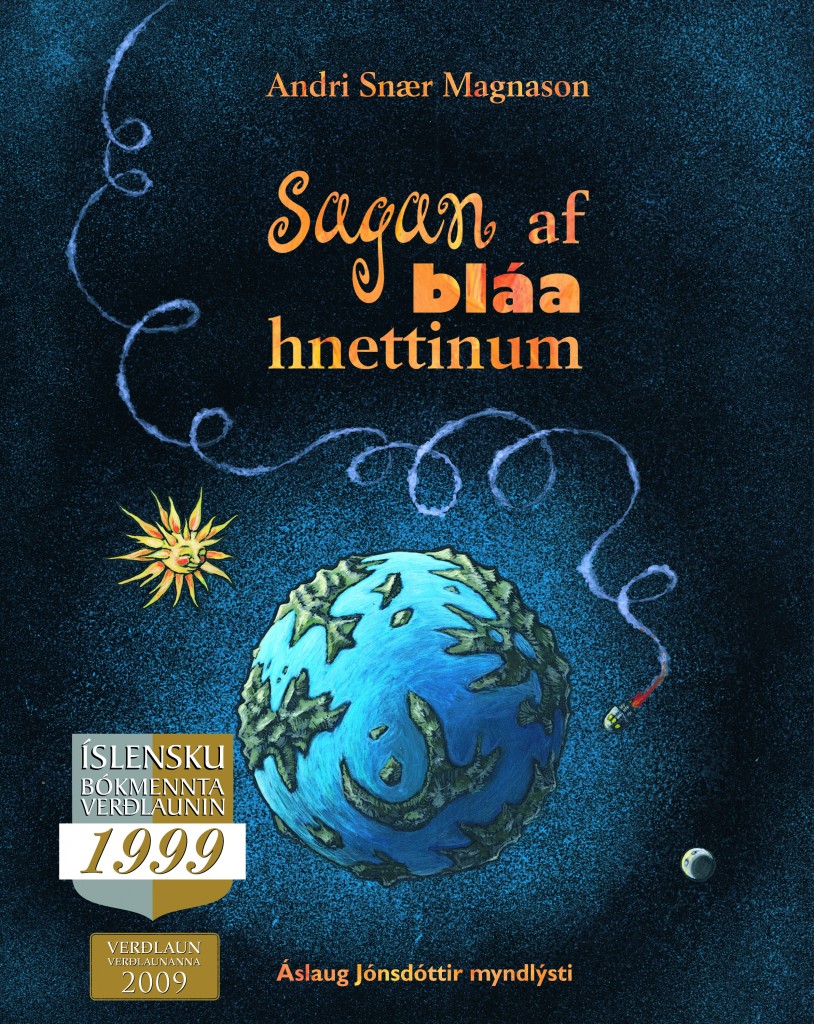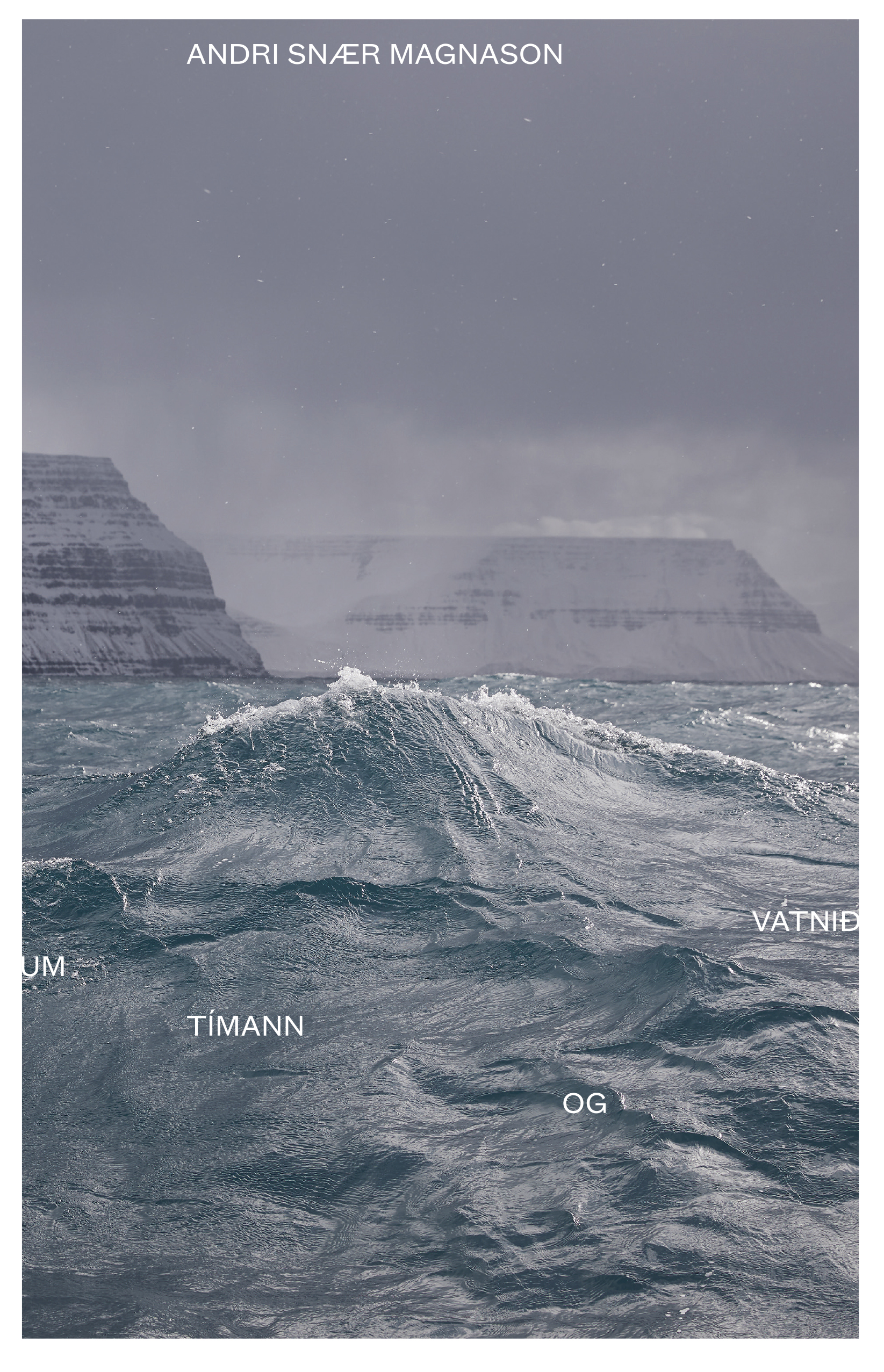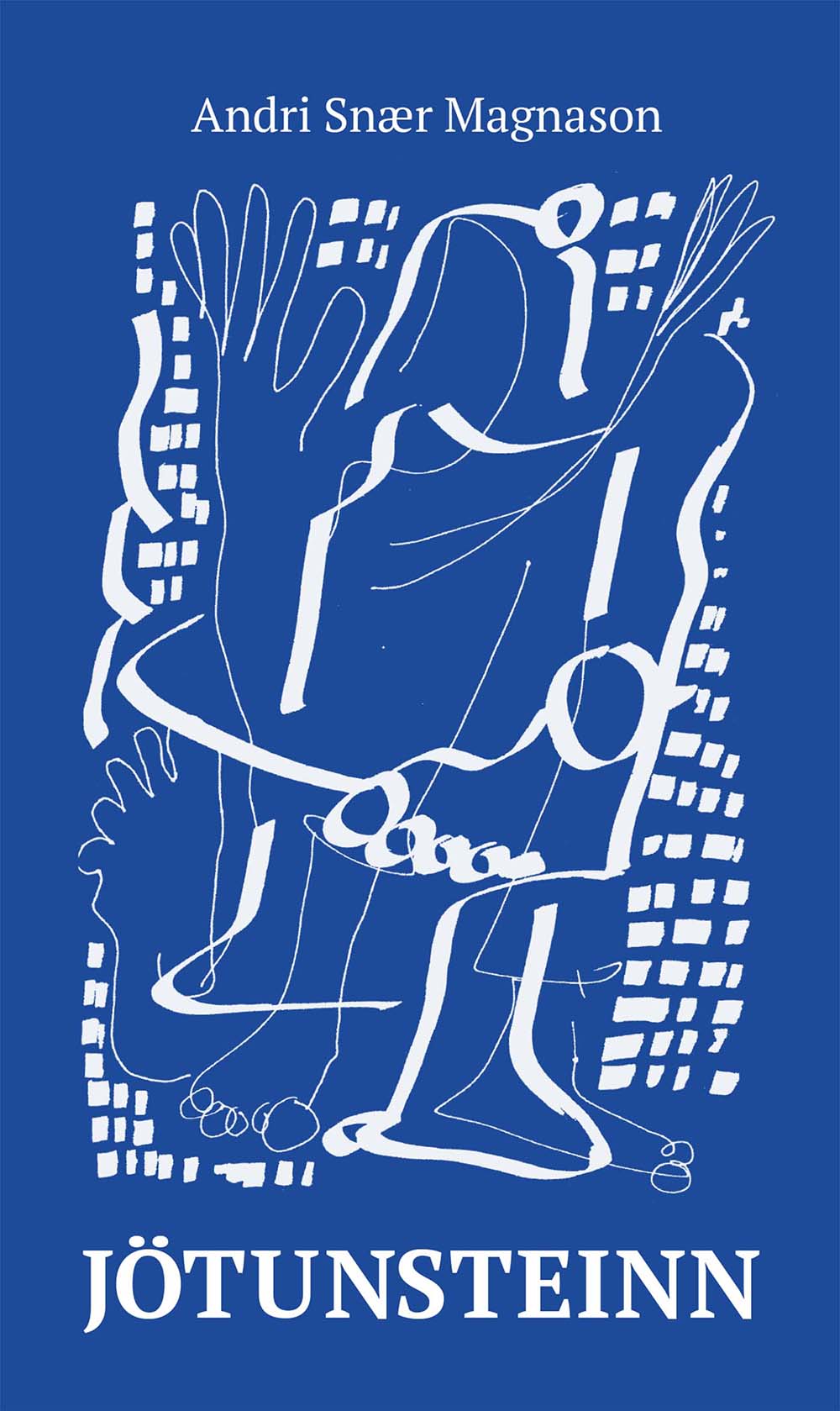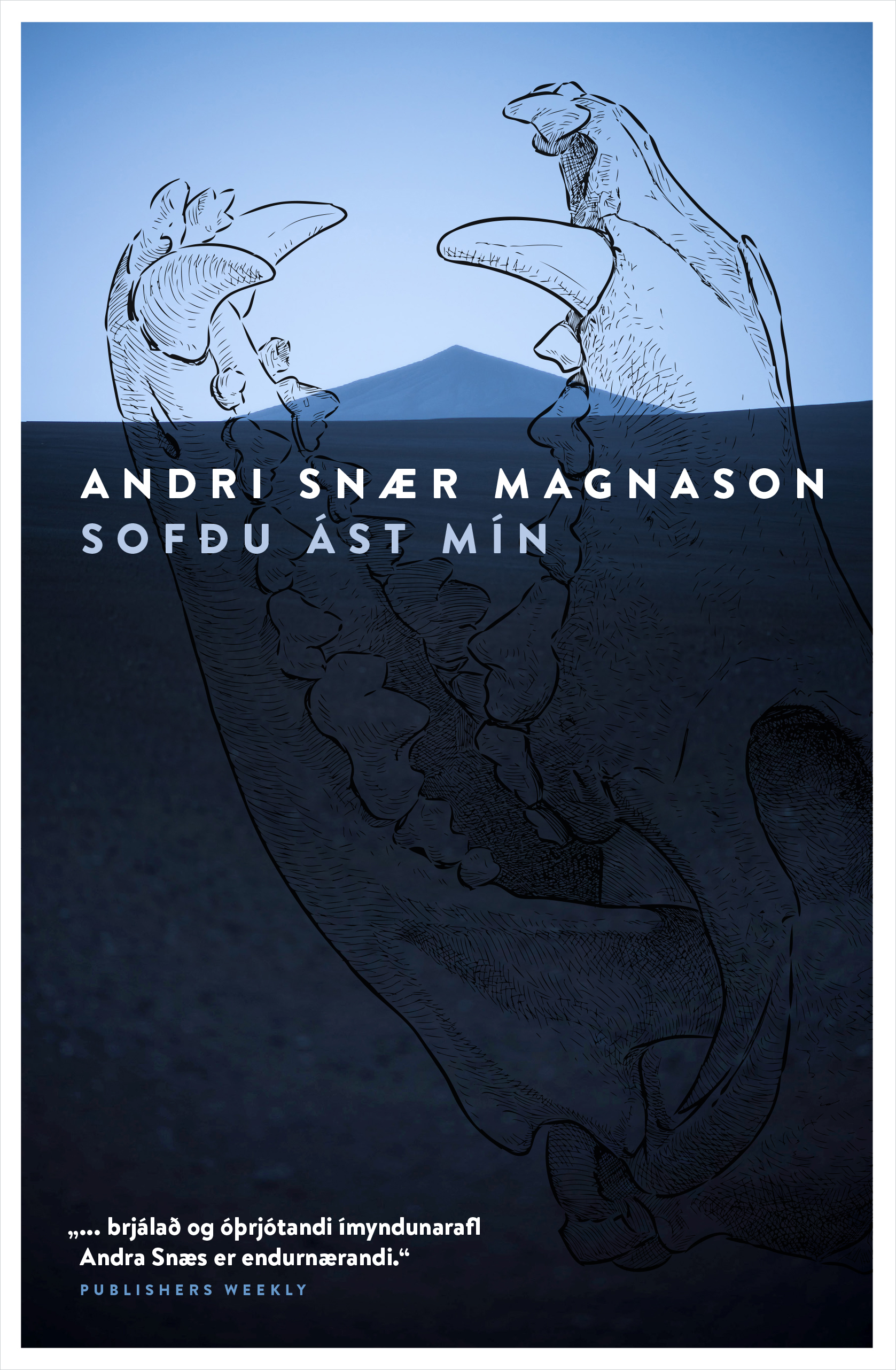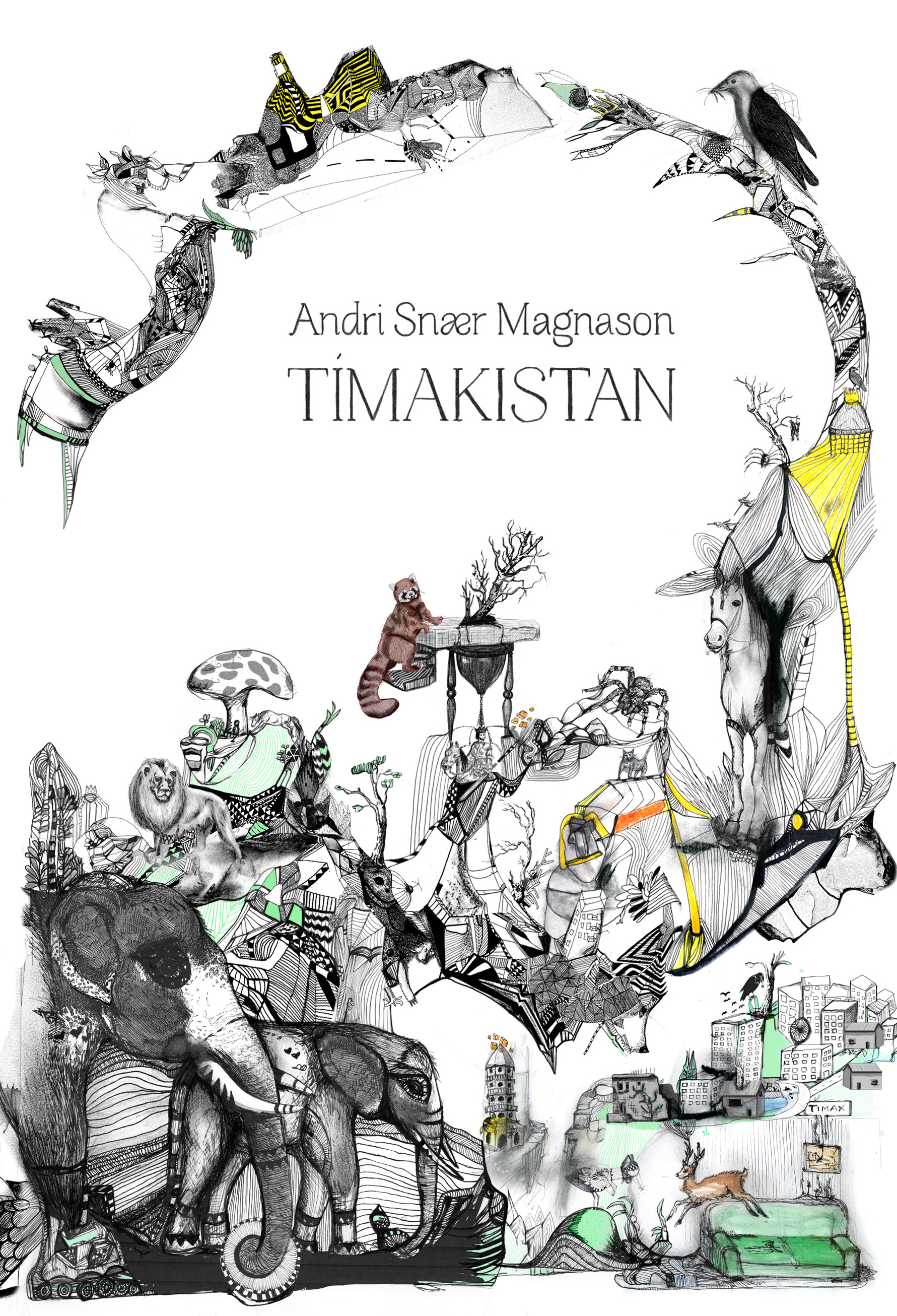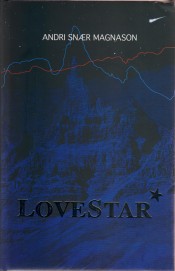No other children’s book from Iceland has been sold to as many territories as The Story of the Blue Planet!
On a blue planet far out in space there are no adults, only children, who play when they want to and go to sleep when they are tired. Then a mysterious man lands on the planet, and teaches them how to fly when the sun shines, by flicking the dust off butterflies’ wings. A perilous adventure ensues, taking the children through dark forests and skies of blue. Their friendship and ingenuity are put to the test as never before.
A captivating and subtle adventure that has all the ingredients of a classic. A play based on the book premiered in The Icelandic National Theatre in 2001 and has since travelled around the world in theatres in Sweden, Pakistan, Greece, Bucharest, London, Berlin, Chicago and Toronto, to name a few.
AWARDS AND NOMINATIONS
• The Icelandic Literary Prize 1999
• The Janusz Korczak Honorary Awards 2000
• Nominated to the IBBY International Honour List 2001 for Illustrations
• The West-Nordic Children’s Literature Prize 2002
• Nomination for the Nordic Council Children and Young People’s Literary Prize
• Nomination for the IBBY Iceland’s Children Literature Prize
• The National Theatre Prize for New Plays
• Nomination for Reykjavik Children’s Literary Prize
• Nomination for 5 DORA awards -Toronto 2005
• Green Earth Book Honor Award 2013, USA
• UKLA (UK Literacy Association) Book Award 2014
• My Favourite Children’s Books Award 2019, China (One of the best children’s book prizes in China, similar to the annual Children’s Book Awards in UK, where children in China voted for their Top 30 books of the year)
• Nomination for the Orbil Prize, Italy 2023
R E V I E W S
“Honorary Awards are given to Andri Snær Magnason for The Story of the Blue Planet for the interesting literary parable presenting problems of childhood in front of the choice between “to have” and “to be”.”
THE STATEMENT OF THE JURY OF THE JANUSZ KORCZAK INTERNATIONAL LITERATURE AWARDS
“In most children’s books, from “Little Bear” to “The Jungle Book,” nature exists as a kind of utopia, a lush playground with anthropomorphized animals. It’s rare to find stories that realistically depict the natural world — as a beautiful but fragile realm under siege. Is it because Dr. Seuss so brilliantly impugned the human race’s ecological crimes in “The Lorax” that another masterpiece in the genre has seemed beyond reach? Because our children are so screen-addicted and nature-starved, we fear further exiling them from the outdoors with tales of environmental peril? Or maybe it’s because such stories would expose any grown-up who travels by aircraft or uses Ziploc baggies as an environmental offender. Whatever the reason, eco-lit needs more attention, and devotees will be pleased to discover a new addition from the Icelandic author Andri Snaer Magnason, who writes with a Seussian mix of wonder, wit and gravitas.
… In the tradition of Roald Dahl and Maurice Sendak, Magnason’s story celebrates the ferity and fearlessness of childhood as an idealized state. …
Magnason’s writing is lean, swift and often lyrical (owing in part to an impressive translation by Julian Meldon D’Arcy), and for the most part he manages not to be didactic. …
the book, over all, is immensely satisfying — a major contribution to the sparsely populated eco-lit genre, and one that could entice other authors to contribute. Magnason’s story touchingly reminds us of the Dahlian principle that adults are “complicated creatures, full of quirks and secrets”; and that children “are the music makers . . . the dreamers of dreams.” And further — that these dreamers may also be our best hope of unsticking the sun from the sky, of making the rains fall normally again and of repairing a real-life planet damaged by grown-ups.”
AMANDA LITTLE, THE NEW YORK TIMES
STARRED REVIEW
“His sly, smart parable, first published in 1999, takes aim at the central dilemma of the developed world: is it ethical to be happy at the cost of others’ suffering? … Dahl-like wit and a couple of eccentrically Arctic moments … make this a memorable and provocative tale, and a splendid opener for discussions about our own blue planet.”
PUBLISHERS WEEKLY
“The Story of the Blue Planet is a fairytale of the best kind. The force of good is innocence and the force of evil the magical solutions that we accept so unquestioningly. … Aslaug Jonsdottir’s illustrations and book design are a spectacular addition to Andri Snær’s extraordinary text, and the total effect is incredible.”
DV NEWSPAPER
“The Story of the Blue Planet is overall highly successful, excellently written and illustrated, and it will undoubtedly be found on many children’s bedside tables …”
DAGUR NEWSPAPER
“Incredibly entertaining – a real fairytale. … it reminds me of (Astrid Lindgren’s) The Lionheart Brothers – one of my favourite books.”
SCREEN1 TV, ICELAND
“The Story of the Blue Planet can be read on many levels: as pure fairytale, a contemplation on ethics, a fable or entertainment. … There is one word that encapsulates everything that this story is: genius.”
MORGUNBLADID DAILY
“Carrying a load of messages to its readers, The Story of the Blue Planet reads like a parable, but Magnason never indulges in moralizing the reader and leaves him or her to make their own assumptions, so the story at its core never suffers from the burden of didacticism.
… Aslaug Jonsdottir’s illustrations are the icing on the cake. Her layout approach is somewhat postmodern, harking back to Jon Sciezka’s The Stinky Cheeseman with its effective variations in font. The combination of Jonsdottir’s and Magnason’s talents results in a story of contrasts: of good versus evil, light vs. dark, innocence vs. corruption, and childhood vs. adulthood. The Story of the Blue Planet is both real and unreal, simple and complex, serious and funny. Above all, Magnason has proved that social and moral criticism is far from obsolete: a children’s book can be provocative and funny, even outrageous, while (as a true fairy tale) inducing the child to contemplate moral values – which have been horrendously distorted by the media and contemporary mass culture.”
NORDIC LITERATURE
“A modern classic.”
BILL COX, OPENING DOORS
“Magnason’s beautifully illustrated and expertly translated book is charming, eccentric, moving, and humbling – often reminiscent of Roald Dahl or William Steig.”
KARLI CUDE
